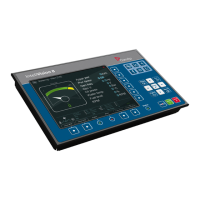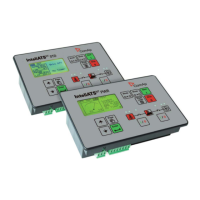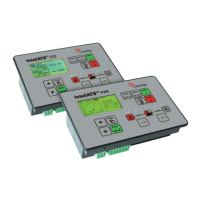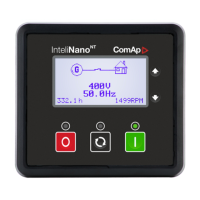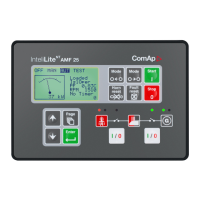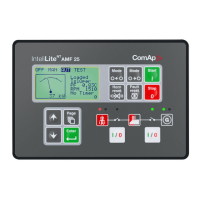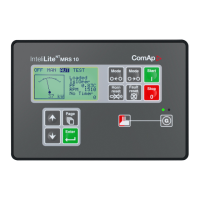11.4 Modbus protocol
The Modbus protocol can be activated on the RS232 or RS485 port. The physical link parameters are:
8 data bits
1 stop bit
no parity
communication speed selectable by the setpoint ModbusComSpeed
The Modbus/TCP protocol uses the TCP/IP frames as the transport layer for Modbus frames. This
protocol is available via the IB-Lite module on port 502.
The following features from the Modbus specification are supported:
Transfer mode RTU
Function 3 (Read Multiple Registers)
Function 6 (Write Single Register)
Function 16 (Write Multiple Registers)
The response to an incoming message depends on the communication speed. The delay is not
shorter than the time needed to send/receive 3.5 characters. See the latest Inteli Communication
Guide (available on the ComAp website) for details and examples.
The complete description of the Modbus communication protocol can be found in the Modbus Protocol
Reference Guide PI-MBUS-300 and Open Modbus Specification Release 1.0. Both documents are
available on the web.
NOTE:
The complete list of available registers can be obtained from LiteEdit. Open an online connection to
the controller or open offline an archive and go to the menu Controller -> Generate Cfg image to get
the register list.
CAUTION!
Do not write setpoints repeatedly (e.g. power control from a PLC by repeated writing of baseload
setpoint via Modbus) The setpoints are stored in EEPROM memory, which can be overwritten up to
10
5
times without risk of damage or data loss, but it may become damaged, when the allowed number
of writing cycles is exceeded!
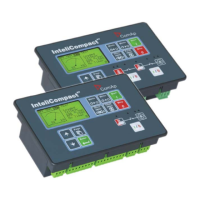
